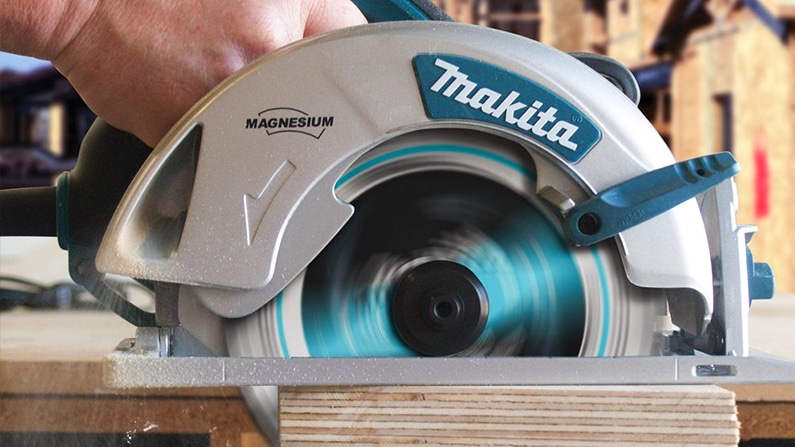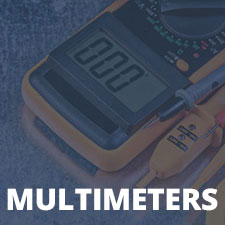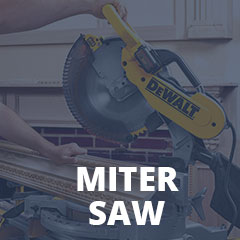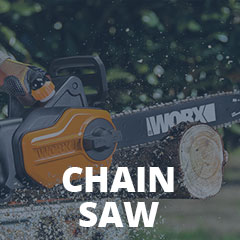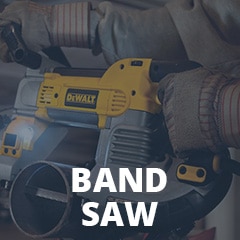Circular saws are popular handheld power tools that are a must-have addition to any carpenter’s or builder’s collection. You would be hard-pressed to see a renovator or construction worker without one. While they aren’t completely required for all jobs, they certainly make every job easier, quicker, and much more efficient.
A circular saw uses electricity to power its ever-spinning blade. Professionals and beginners alike can get plenty of use from this kind of saw, as the circular blade sizes vary per project. For example, you can use a small 6.5” blade to cut thin planks of wood, while the 12” or 18” diameter blades are so powerful that they can cut through cement.
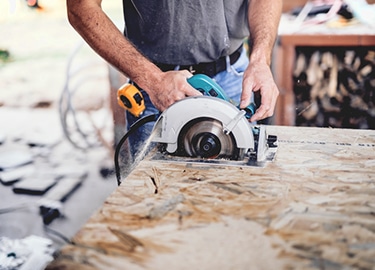
Basic Features of the Circular Saw
Base Plate
Blade
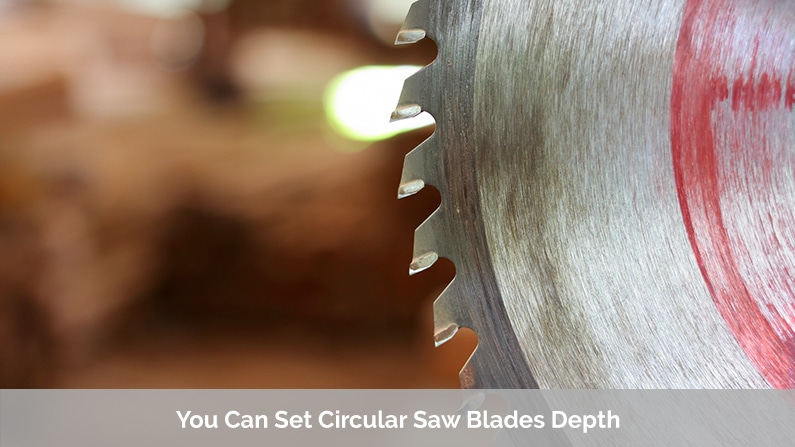
Ripping Fence
Dust Ejector
A dust ejector is used to get sawdust away from your face while you’re rapidly cutting with your circular saw. Most newer circular saw models, such as the Bosch CSDCHUTE, come with dust ejectors to blow sawdust away from the area where you are making your saw cuts.
Blade Guard
Types of Blades
- Blades with more than 40 teeth, which are used for crosscutting.
- Blades with fewer than 28 teeth, which are used to rip timber along the grain.
- Abrasive blades, which are carborundum and used to cut concrete and metal, although they can wear down easily and require replacements.
- Tempered alloy blades, which use carbon steel teeth in a fine line for galvanized metal, aluminum, or metal tube cutting.
- Diamond rim blades, which are highly specialized and use industrial diamonds to make them extra tough and durable for cutting cement and brick products.
Setting Up Your Circular Saw for Use
Do you know what materials you’re using? What is it that you’re trying to cut? Do you want to tilt the blade for an angled line, or are you using the saw on your table?
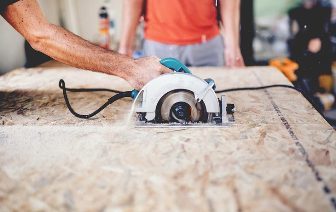
Step 1 - Support Your Materials
Step 2 - Mark Your Materials
Step 3 - Set the Depth
Step 4 - Check the Saw Guard
